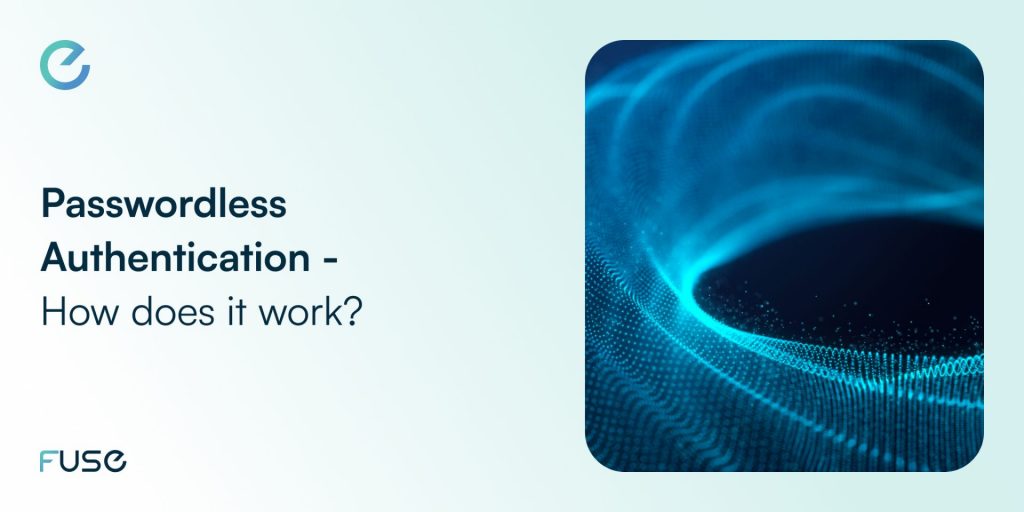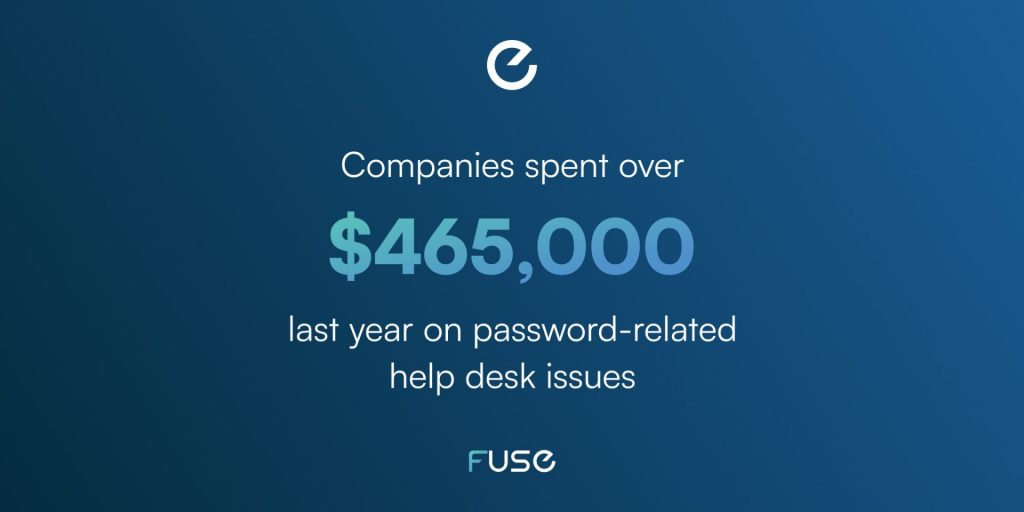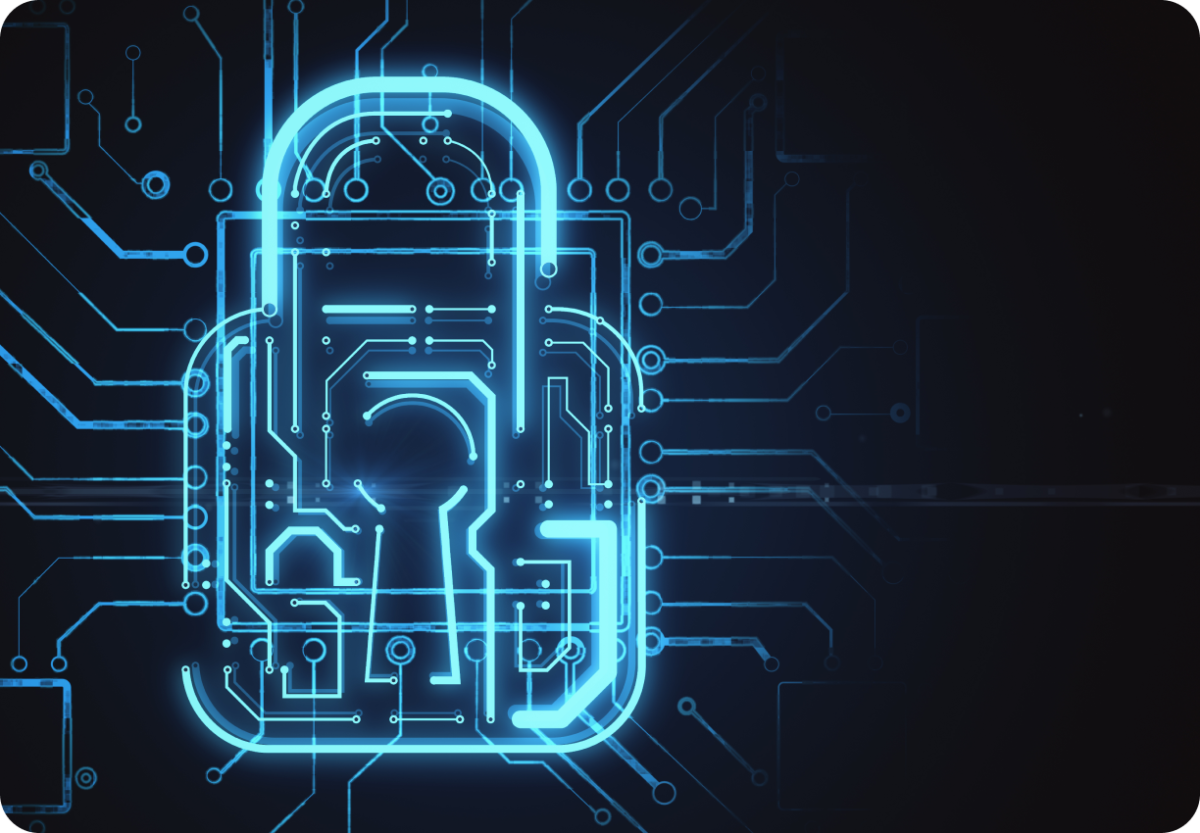Passwordless Authentication – How does it work?

The advances in technology in recent years brought about an increasing number of cyber-attacks and data breaches.
No less than 53% of companies experience critical data loss and 56% of them face significant financial losses due to breaches, according to a report by Hypr.
As a result, the security of online accounts and personal information has become more essential than ever.
One way to enhance security is by adopting passwordless authentication. In this article, we will delve into the topic, exploring what passwordless authentication is, how it works, its types, and how secure it is.

What is Passwordless Authentication?
Passwordless authentication is a security protocol that enables users to log in to their accounts without the need for traditional passwords. Instead, passwordless authentication relies on forms of authentication such as biometrics, security keys, or one-time codes.
The passwordless authentication process typically starts when a user tries to log in to a service or application. Instead of entering a password, the user needs to provide some form of verification. These include fingerprint scans, face recognition, or push notifications on their phone.
Once the user provides this verification, the service compares it to a previously stored template or token to determine if the user is authorized to access the requested resource.
Passwordless authentication eliminates the need to remember passwords or create complex, difficult-to-guess ones. This makes it more convenient and user-friendly than traditional authentication methods, which are often time-consuming and prone to human error.
How does it work?

Instead of asking you to fill in your passwords, passwordless authentication relies on various other authentication methods, each having its unique way of verifying a user’s identity. Among the most common methods used for passwordless login, we encounter:
Biometrics – which refers to the use of unique physical characteristics such as fingerprints, facial recognition, or iris scans to identify a user. Biometric authentication has become increasingly common in mobile devices and laptops since these devices are equipped with the necessary sensors and software to support biometric authentication.
Security Keys – physical devices that users can carry with them to authenticate their identity. These devices generate a unique one-time code that users can use to log in to their accounts. Their popularity skyrocketed in high-security environments, such as banks and government agencies.
One-Time Codes – unique codes generated and sent to users via email, text messages, or mobile apps. Users can then use the code to log in to their accounts. One-time codes come in handy when users don’t have access to their primary devices, such as when traveling or working remotely.
Is Passwordless Authentication secure?
Passwordless authentication is generally considered more secure than traditional password-based authentication. Passwords are notoriously weak because users often choose easy-to-guess passwords or reuse them across multiple accounts. Passwords can also be stolen or hacked, which can lead to data breaches and cyber-attacks.
In contrast, passwordless authentication relies on forms of authentication much harder to steal or hack, such as biometrics or security keys. For example, biometric authentication relies on unique physical characteristics that are difficult to replicate or guess, while security keys generate one-time codes that are only valid for a short period.
Apart from that, there is less risk for phishing, since passwordless authentication reduces the attack surface by eliminating the need for users to enter passwords, which are often the weakest link in the authentication chain. This minimizes the risk of phishing attacks and other forms of social engineering, where attackers trick users into revealing their passwords.
All in all, passwordless login improves user experience by simplifying the login process, eliminating the necessity to remember complex passwords or go through tedious password reset procedures. This reduces the likelihood that users resort to insecure password practices, such as using weak passwords or reusing passwords across multiple accounts.
Why passwordless?

While passwords have been the go-to authentication method for decades, their popularity started to fade away.
This is the result of multiple factors, such as the rise of cyber threats and the increasing complexity of password requirements. Users find it harder to manage multiple passwords across various accounts, given how many subscriptions and services people use nowadays. There’s also the vulnerability to attacks and possible security breaches.
Another crucial factor is the cost of managing accounts that rely on password authentication. A survey by Hypr found that companies spent over 465.000 dollars last year on password-related help desk issues! Imagine putting all that money to good use instead.
Passwordless authentication solves these shortcomings while providing enhanced security and convenience. As such, it became the preferred authentication method for many organizations.
Passwordless authentication or multi-factor authentication?
Both Passwordless authentication and multi-factor authentication (MFA) aim to improve security by requiring users to provide additional credentials beyond just a password. How do they differ?
Passwordless authentication typically relies on a single authentication factor specific to the user, such as biometric authentication (e.g., fingerprint or face recognition), cryptographic tokens, or one-time codes.
On the other hand, multi-factor authentication requires users to provide at least two authentication factors, typically something the user knows (such as a password) and something the user has (such as a smartphone or cryptographic token). MFA can also include biometric authentication. MFA is often seen as a more robust authentication method than passwords or passwordless authentication alone, as it requires attackers to compromise multiple authentication factors to gain access to user accounts.
Each has its advantages. Multi-factor authentication is generally more effective at preventing unauthorized access than passwordless authentication alone. MFA reduces the risk of account takeovers by over 90% compared to using passwords on their own. However, passwordless authentication, particularly biometric authentication, has become more user-friendly and faster than traditional MFA methods.
Fuse and Passwordless Authentication
But how to go about it?
Fuse, our digital integration platform, offers passwordless login capabilities, allowing users access without traditional passwords.
It works by creating new Identity Provider (IdP) integrations that correspond with the passwordless login method. Instead of traditional passwords, users can use forms of authentication such as biometric data, secure tokens, smart cards, common access cards, authenticator apps, and RFID.
Fuse also allows the merged use of a single account across multiple IdPs. This way, users can link the passwordless login to an existing account to streamline the authentication process and provide a smooth experience across different platforms.
Once a user has authenticated with their existing account, Fuse grants access and authorization based on the security permissions assigned to the account they authenticated with. This ensures that users will only be able to access the features and functionality that they have been granted permission to access, reducing the risk of unauthorized access and data breaches.
Among the methods Fuses uses for passwordless authentication, we find biometric authentication, which allows users to authenticate their identity using biometric data such as fingerprints or facial recognition. Another method employed is secure tokens, small devices that generate one-time codes that can be used for authentication. Given the difficulty of replicating biometric data and the random generation of the codes, both methods provide higher security levels than traditional passwords.
In addition to these, Fuse also supports methods of passwordless login such as smart cards, common access cards (CAC), authenticator apps, and RFID.
Fuse – The ideal solution
To sum up, Fuse provides a wide range of passwordless login options, intending to meet the security needs of different organizations and industries. These capabilities ensure that user interactions are safe and secure, reducing the risk of security breaches and providing a better user experience.
Interested in trying Fuse out? Feel free to request a demo and we’ll provide you with customized and secure solutions.

Contact us today to learn more about how eTag Fuse can help your organization!

















